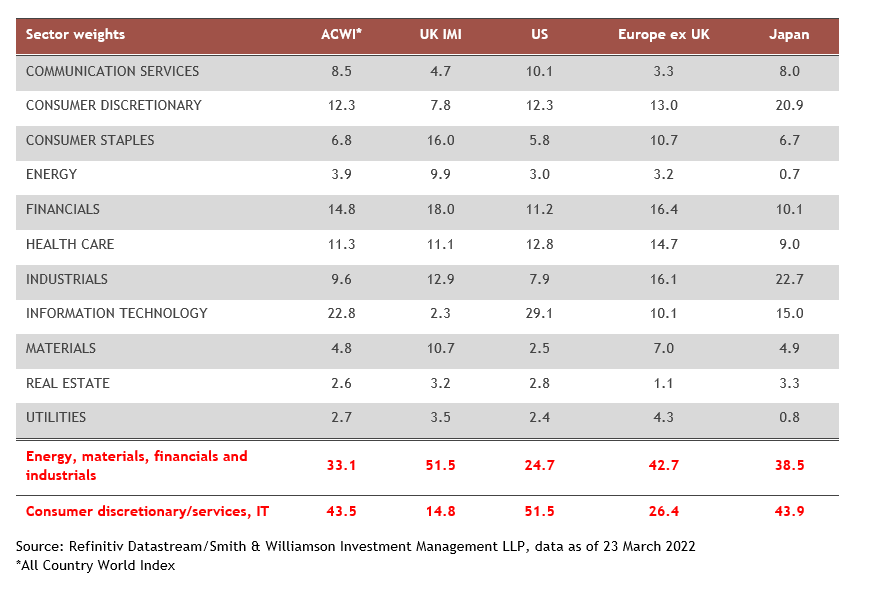Gold should be part of a diversified portfolio
Gold has historically been considered the asset class of choice at times of major uncertainty. Its recent strong run is consistent with this narrative, with the gold price up around 8% since the start of the Russia/Ukraine crisis.1 While its role as a hedge against uncertainty may be reflected in its price today, gold still has an important diversification role to play in an investor’s portfolio.

Gold has historically been considered the asset class of choice at times of major uncertainty. Its recent strong run is consistent with this narrative, with the gold price up around 8% since the start of the Russia/Ukraine crisis.1 While its role as a hedge against uncertainty may be reflected in its price today, gold still has an important diversification role to play in an investor’s portfolio.
Interest rates up, gold down?
US Treasury real yields (nominal yields adjusted for inflation) are an important driver of the gold price over the medium to long term. As a non-yielding asset, the opportunity cost of holding gold increases at a time of rising yields. As such, when real yields rise, the gold price tends to fall. Until the recent bout of geopolitical uncertainty, rising US interest-rate expectations had put downward pressure on the gold price.
Looking forward, the Federal Reserve shows no sign of reining in its plans for rate rises. If anything, recent statements from the US central bank have taken a stronger stance on future rate rises. The market now expects rates to rise more than two percentage points over the next 12 months.2 This is likely to continue to push up real yields, but this is well understood by the market, and likely already reflected in the price of gold to some extent. However, gold continues to maintain its appeal as a perceived safe-haven asset and a portfolio diversifier.
Don’t put all your eggs in one basket…
Regardless of the near-term direction of the gold price, investors are often attracted by its performance as a portfolio diversifier. Historically, gold has a low correlation to equities. As such, during times of stock-market volatility, it has been a good asset to own. As with other assets, it is difficult to time moves in and out of gold, so many asset allocators favour a small structural allocation.
Our research supports this decision. Using data from the last 50 years, we find that a portfolio with 10% gold, 35% bonds, and 55% equities generated an annualised return of 9.8%, with an annualised volatility of 9.2%.2 In comparison, the frequently cited 60/40 portfolio (i.e. a portfolio consisting of 60% equity and 40% bonds) produced a slightly lower 9.7% return, but with higher volatility of 9.8%.2 As a result, the portfolio containing gold has a higher Sharpe ratio, an important measure of risk and return, than the 60/40 portfolio.


Are we approaching a golden era?
The recent Western financial sanctions against Russia could act as a positive driver for gold. Cash and bonds held overseas as part of a country’s foreign exchange reserves are no longer ‘risk free’, as shown by the freezing of Russia’s central bank assets held overseas. Given this risk other central banks may be reluctant to hold assets outside their national borders. Take China, for example. Though it is not subject to any financial sanctions by trading with Russia, this sea-change event on sanctions may encourage Beijing to recycle more of its trade surplus into gold, which can be held domestically in a secure vault, and less into assets in Western financial systems.
Gold continues to shine
While the disruption from inflation and geopolitical risks may largely be reflected in the price of gold, investors shouldn’t underestimate its long-term role as a portfolio diversifier, where there is clear evidence it can both improve returns and lower volatility. We continue to believe that a small allocation to gold can come at the expense of fixed-income holdings.
Sources:
1 Refinitiv Datastream, data as at 1 April 2022
2 Bloomberg, data as at 1 April 2022
Important information
This document is solely for information purposes and is not intended to be, and should not be construed as investment advice. Whilst considerable care has been taken to ensure the information contained within this commentary is accurate and up-to-date, no warranty is given as to the accuracy or completeness of any information and no liability is accepted for any errors or omissions in such information or any action taken on the basis of this information. The opinions expressed are made in good faith, but are subject to change without notice.
You should always remember that the value of investments can go down as well as up and you can get back less than you originally invested. Past performance is not an indication of future performance.
Smith & Williamson Investment Management LLP
Authorised and regulated by the Financial Conduct Authority
Smith & Williamson Investment Management LLP is part of the Tilney Smith & Williamson group.
© Tilney Smith & Williamson Limited 2022
Ref. 22044000
Disclaimer
This article was previously published on Smith & Williamson prior to the launch of Evelyn Partners.



